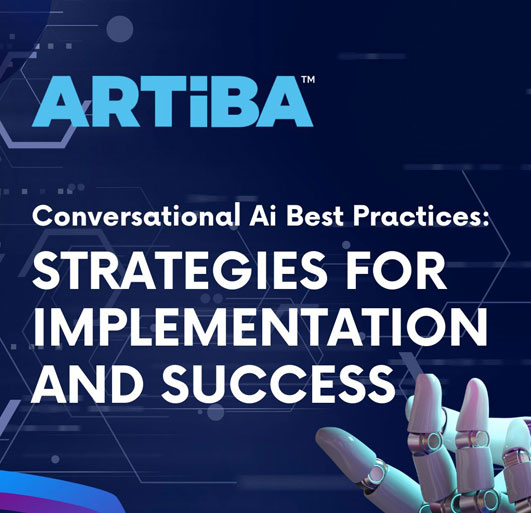Top 5 Challenges of Adopting AI in Education

Artificial Intelligence in the Education system is a much talked about theme across the world. However, the realization of its potential is not uniform across developed and developing countries. ARTiBA elaborates on the prevalent issues faced by education sector worldwide while adopting AI.
The application of Artificial Intelligence (AI) algorithms and systems in education is growing year by year. As education evolves, researchers are applying advanced AI techniques, i.e. deep learning, data mining, etc., to deal with complex learning issues and customize teaching methods for individual students.
To add to the list, COVID-19 accelerated the process when the lectures, classes, and test-taking were taken online. As revealed by a 2020 Educause poll, 54 percent of institutions were using online or AI-based remote proctoring services.
Artificial Intelligence is being leveraged in the education sector more frequently than we could imagine.
Technical aspects of AI in the education system
AI in education initially involved use of computers and computer-related systems. It has advanced further as web-based and online education platforms have emerged. Embedded systems enable the use of robots as colleagues or independent instructors and chatbots can perform teacher-like functions.
Studies suggest that the use of these platforms and tools have improved teacher effectiveness, improved instructional quality, improved learning experiences for students, customized or personalized learning materials to the needs and capabilities of the learners. Here is a list of key technologies that support AI in education.

AI is being explored extensively in K-12 education, corporate training, language learning, higher education, quality training, and reading. However, there are several challenges in adopting AI for education.
AI in Education: Five Challenges to overcome
The recent reviews suggest that research regarding AI in Education is mainly concentrated in developed countries and is limited in the developing world. There are multiple limitations or challenges faced by both countries to leapfrog education systems using AI technology opportunities. Let’s have a quick look on these limitations here.
Challenge #1: An all-inclusive public policy on AI for development.
Though AI holds incredible potential for improving education systems, the 360-degree inclusion of AI in education needs a robust policy support. Education leaders should be aided financially, as well as ethically, to focus on shaping learners who have the skills to thrive in the AI society. As of now, the AI advancements in schooling are coming from private sectors such as LightSide, Coursera, McGraw-Hill, Pearson, and IBM, while the government struggles to manage.
The development of public policy for AI in education is in its earliest stages, but it’s expected to grow in the next 10 years. State policies should resolve inquiries to generate solutions and guidelines, support innovative ecosystems to realize the opportunities of AI in the field of education.
Several countries have already made significant budgetary commitments toward creating AI research centers, recruiting and preparing AI experts. Governments are also investing in research and advanced training in AI by establishing academic centers of excellence in AI, scholarships, and research institute networks.
Countries like Argentina, Singapore, Estonia, Malaysia, Kenya, France, South Korea, and Germany have forged partnerships between industry and academia to share material and financial resources.
Partnerships between universities and research institutes will foster collaborative research and intra-sector partnerships and advance academia-industry partnerships.
Challenge #2: Inclusion and Equity in AI in Education
AI may deepen the existing inequalities and divides because the disadvantaged populations might get excluded from AI-powered education, resulting in a digital divide.
Note: Digital divide is a new kind of divide where there exists a divide in the use of data-based knowledge for intelligent decision making.
Equity and inclusion should become the core values when designing policies. The policymakers should consider these aspects while doing so:
-
Urgency of infrastructure in developing countries
-
Learnings from previous experiences in terms of digital rights
-
AI benefits for the disadvantaged groups and populations
-
Close the educational gap between economically rich and poor students
-
Close the gender gaps
Some of the obstacles to overcome include -
Multiple policies must be put in place to remove these basic obstacles. It is essential to consider internet as a human right and create multiple international alliances to build basic infrastructure in even the poorest sectors of the developing world.
For instance: The Broadband Commission for Sustainable Development is actively engaged in high- promoting broadband in developing countries and underserved communities.
Challenge #3: Preparing teachers for AI-powered education
It is of utmost importance to address the existing problems that teachers face. Teachers remain at the frontline of education as creative and social-emotional aspects of teaching can never get neglected.
In this lane, AI-powered software in education must fabricate a solid scaffold in cognition, classrooms, and large-scale test scores. Several countries are designing policies to support the national EdTech industry’s efforts to promote innovation and intensify efforts while empowering teachers and schools.
A clear understanding of how AI-enabled systems can facilitate learning provision to make value judgments should be thought on.
Training should be emphasized on:
-
Research and data analytical skills to interpret data provided by AI-enabled systems
-
New management skills to manage human and AI resources at their disposal
-
Critical perspective on how AI technologies affect human lives
-
Take advantage of AI taking over repetitive tasks
-
Help learners achieve new skills and competencies (that cannot be replaced by machines)
Challenge #4: Develop quality and inclusive data systems
The data we have is sporadic, unevenly distributed, and limited. Also, learning results are connected tightly with the emotional health, socio-economic status, family, and background of the students. In addition, government policies and related factors might modify academic performance.
A complete functional data analytics system can open possibilities for AI-enabled predictive and machine learning algorithms. However, the technologies covered for capturing data might prove costly for low- and middle-income countries. The costs need to be weighed carefully against the benefits.
Challenge #5: Ethics and Transparency
There are certain societal and ethical concerns to be addressed while implementing AI. Technology is improving quickly and what is impossible today can become possible tomorrow.
Data privacy and security is the immediate question that comes up in any discussion regarding data ethics. The challenge lies in using personal data while ensuring the protection of individual privacy preferences and personally identifiable information.
The collection and use of data must be anchored on express and informed consent, transparency, and fairness.
Conclusion
To date, the private sector and tech giants are leading in most countries such as the United States and China. The rise of tech startups is also playing a significant role in accelerating AI adoption. Many countries have national AI strategies in which education is an element by default. In developing countries, the discussions and adoptions are limited.
The adoption of AI in education should become a regular and continuous process. The sky is getting clearer now. The development is so promising that the AI days of education are not so far.







